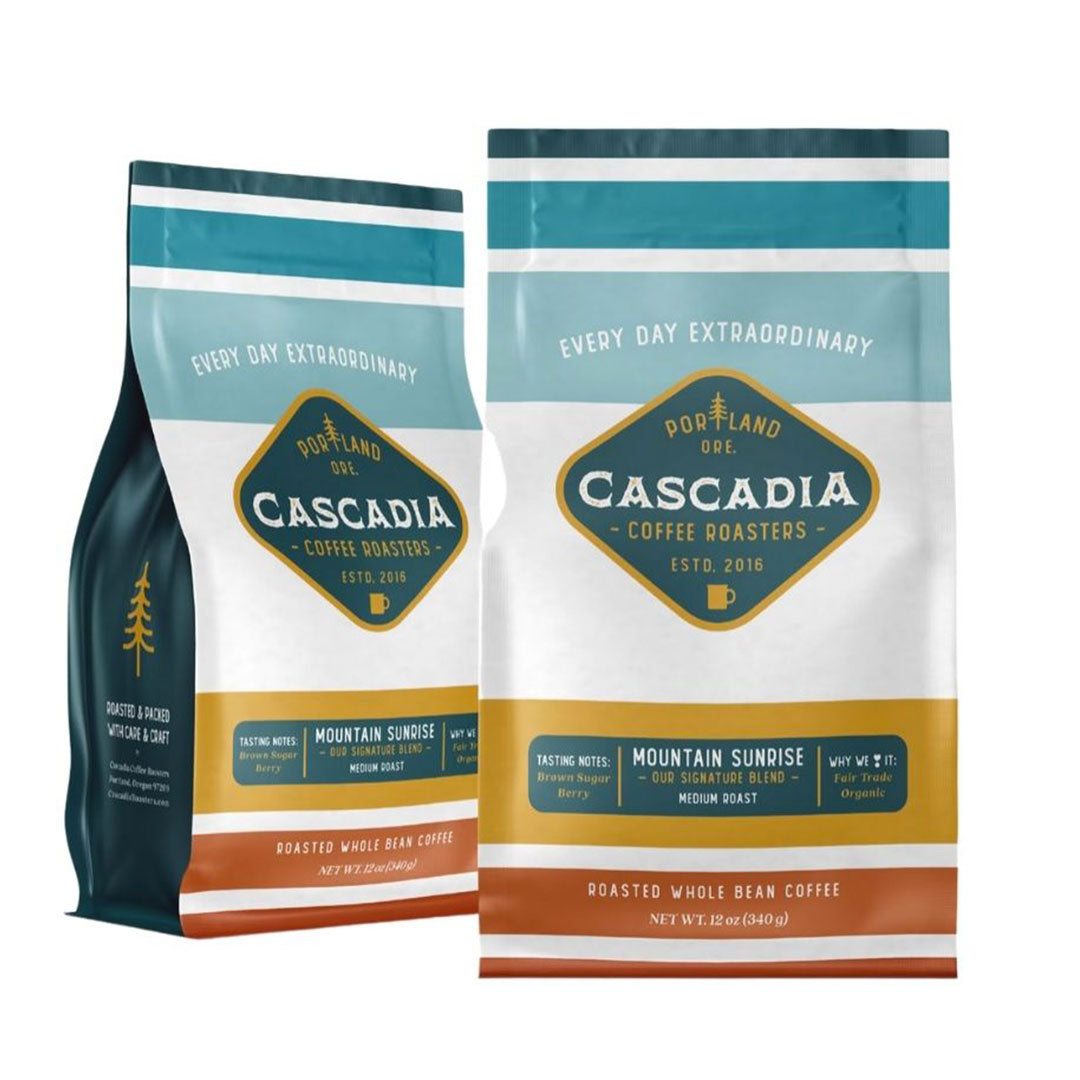Oregon and Washington have an abundance of wild huckleberries that ripen to perfection from August into mid-September. And since we’re avid hikers, we’ve often had the good fortune to find plenty of tasty huckleberries during our wanderings.
So, while this isn’t meant to be an exhaustive list, we thought we’d share a handful of our favorite forested hikes (not closed off due to last September’s epic wildfires) where we’ve stumbled across handfuls of delicious huckleberries.

About Wild Huckleberries
The huckleberry fruit is similar to a blueberry, just smaller and a deep purple color when ripe. Its flavor is a bit tart and a bit sweet, with more character than you’ll find in a typical blueberry. Huckleberries’ thin skin make them delicate to handle, and they don’t hold up super well after picking.
And because they’re small, it takes a lot of work to collect them. So, they may be best enjoyed as a handful eaten along a hike. If you’re gathering a small quantity to take home with you, though, bring a hard-sided container, such as a Tupperware-type tub with a lid or even a wide-mouth water bottle. These options will allow you to collect the tender berries and keep them safe.
Once home, you’ll want to use your huckleberries right away, as they also don’t store well. They’re tasty blended into shakes, stirred into yogurt, or drizzled over ice cream or pancakes.
Where Huckleberries Grow
To find huckleberries, it’s helpful to understand their favorite growing conditions.
Huckleberries thrive at higher elevations, at about 3,000-6,000 feet. You’ll often find them abundant in areas that have been disturbed by logging or fire. The Mt. Hood area of northwestern Oregon is a great place to find them…as are the Gifford Pinchot Forest lands near Mt. St. Helens and Mt. Adams in Washington.
You’ll find huckleberries growing in both forested locations as well as open meadows. Some of the best (and easiest) places to look are around lakes. The good news is that, for the most part, huckleberry bushes tend to grow in patches, so if you come across a huckleberry bush along the trail, chances are there will be plenty more in the same area.
Near Mt. Hood, Oregon
Timothy Lake, south of Mt Hood, has miles of level trail around its perimeter and substantial huckleberry bushes along the way. When we last visited in late July, the berries were still not yet ripe, but they should be ready to pick by mid-August and into September.
Just north of the White River along Highway 35 is a cluster of three great hiking trails, Umbrella Falls,Elk Meadows, and Sahalie Falls, where we’ve had good luck finding huckleberries. These are some stellar Mt. Hood trails whether visiting during huckleberry season or not. Umbrella Falls, in particular, is a photo-worthy destination.

TheUmbrella and Sahalie Falls Trails make for a lovely 6-mile loop hike, alternating between forest and meadowland. You’ll be rewarded with delicious huckleberries along the way, particularly toward the end of the loop on your way back to the trailhead.From Highway 35, take the Mt Hood Meadows turn-off and park at the Umbrella Falls trailhead. You can access the slightly more vertical Elk Meadows trailfrom the same parking area. Hikers have reported huckleberries on the east side of Highway 35 in this area, too, towardTeacup Lake.
We’ve also come across huckleberries in theBonney Meadows/Boulder Lakes Trail area on the east side of Mt Hood. It’s a bit harder to get to, as the road is rough, but if you have a sturdy SUV, a spare tire (just in case!), and a little patience, you’ll also be rewarded with a nicely secluded campout option atBonney Meadows Campground. There are a number of trails and attractions worth checking out in that area, including the Boulder Lakes. Here’s a nicephoto blog article that shows off some of the sights.
This is also a great time to check out nearby Bonney Butte (just a short walk from Bonney Meadows), because it’s also raptor migration season. Hawkwatch International operates aresearch site counting migrating hawks and eagles from the top of the Bonney Butte from late August through October. They welcome visitors to learn about their work. Plus, the Mt Hood view here is stunning.
SW Washington
The Gifford Pinchot National Forest is a huckleberry haven and offers some truly rugged and gorgeous trails to explore. Look for huckleberries between Mt. St. Helens and Mt. Adams, particularly in theTrout Lake andIndian Heaven Wilderness areas. Pro tip: The mosquitos that plague this region in early summer should be minimal by berry season, but bring some bug repellent just in case!

Hike the2.4-mile Sleeping Beauty Trail near Trout Lake, and you’ll be rewarded by some amazing views. It’s a moderate, but relatively short, uphill trek through the forest, with huckleberries in the lower part and stellar Mt. Adams, Rainier, Hood, and St. Helens views from the top. We enjoyed pausing along the trail for a handful of berries on our last visit to catch our breath and enjoy the climb.

Huckleberry-Picking Etiquette
Many forest animals rely on wild huckleberries for food, so the best practice is to take some to enjoy, but leave some for the animals–especially since commercial pickers already tend to wipe out vast swaths. And speaking of animals, huckleberries are a bear’s favorite, so watch for signs. If you see any (scat or prints), it’s probably best to keep heading on up the trail and not linger.
Also, please leave the huckleberry bushes where you find them. While they grow and bear fruit in the wild, they don’t yield fruit when they’re removed from their natural, high-mountain habitat.
Rules for Harvesting in Oregon and Washington
Oregon/Mt. Hood: A (free) permit is required from the Forest Service, even if you are only planning on picking a small amount for your own personal use. Stop at theZig Zag Ranger station to pick up your permit. The folks at the ranger station should also be able to help steer you to the best spots to find huckleberries based on the day you’re there.
You’ll want to avoid picking in areas reserved for Warm Springs Tribal members. Those areas should be marked, but if in doubt, the ranger station will be able to tell you the places you need to avoid.
Washington/Gifford Pinchot: You’ll need a (free) permit to pick even for personal use. You’re allowed to pick up to one gallon of berries per day (3 gallons total per year).Get more info and to obtain a permit here. Or, to visit a ranger station in the Gifford Pinchot Forest,visit this link for locations.
In the Sawtooth berry fields area at the north end of Indian Heaven Wilderness, there are areas reserved for native tribes. Reserved areas should be marked, but if you’re unsure, check with theTrout Lake Ranger Station.
Have other favorite trails you’d like to share? Let us know. We’d love to check them out.




